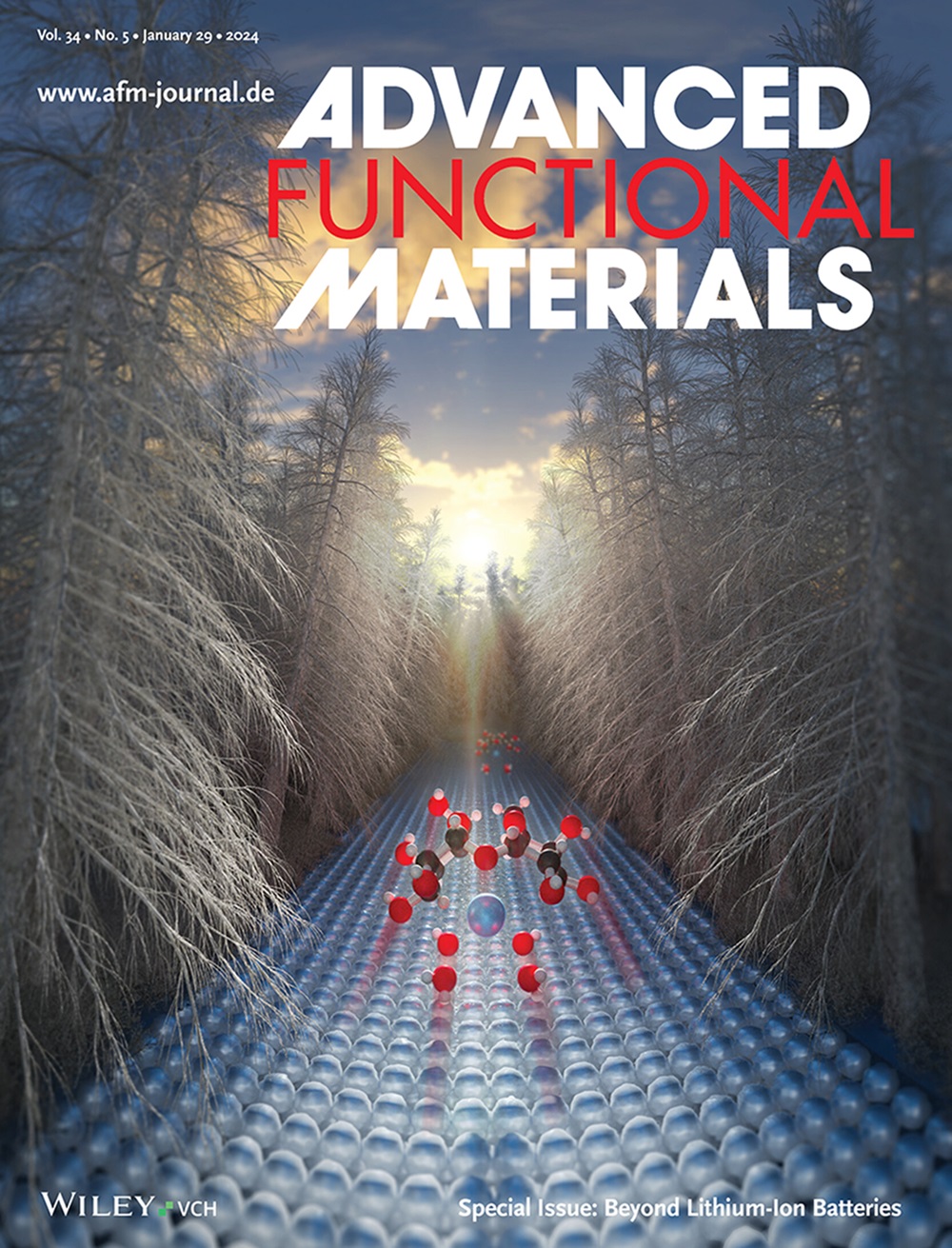Enhanced Pyroelectricity Over Extended Thermal Range in Flexible Polymer Thin Films
IF 18.5
1区 材料科学
Q1 CHEMISTRY, MULTIDISCIPLINARY
引用次数: 0
Abstract
Polymer‐based pyroelectric thin films are crucial functional materials at the core of flexible and lightweight electronic devices, such as wearable monitoring sensors, energy harvesters, and infrared detectors. Nevertheless, the pyroelectric properties of the polymer films, such as poly(vinylidene fluoride‐trifluoroethylene) (P(VDF‐TrFE)), vanish when the surrounding temperature exceeds the ferroelectric‐to‐paraelectric transition temperature, and thus limits their pyroelectric performance to a low‐temperature range. Herein, to mitigate this issue by employing a new class of P(VDF‐TrFE) copolymer which has a low TrFE molar content is proposed. Fine‐tuning of the structure through thermal annealing in a vacuum environment significantly favors robust and highly polarized polymer films with a large area. Electric poling combined with an optimal annealing temperature (110–120 °C) gives highly ordered ferroelectric crystalline domains in the polymer films. Consequently, this remarkably broadens the temperature range (roughly up to 140 °C) for which the polymer film still presents high pyroelectric properties (pyroelectric coefficient 50 µC (m增强柔性聚合物薄膜在扩展热范围内的热释电性
聚合物热释电薄膜是柔性轻质电子设备(如可穿戴监测传感器、能量收集器和红外探测器)核心的重要功能材料。然而,聚偏氟乙烯-三氟乙烯(P(VDF-TrFE))等聚合物薄膜的热释电特性在周围温度超过铁电-顺电转变温度时会消失,因此限制了它们在低温范围内的热释电性能。为了缓解这一问题,我们提出了一种新的 TrFE 摩尔含量较低的 P(VDF-TrFE)共聚物。在真空环境中通过热退火对结构进行微调,可显著提高大面积高极化聚合物薄膜的稳定性。电极化与最佳退火温度(110-120 °C)相结合,可在聚合物薄膜中形成高度有序的铁电结晶畴。因此,这显著拓宽了聚合物薄膜的温度范围(大致可达 140 °C),在此温度范围内,聚合物薄膜仍具有较高的热释电特性(热释电系数为 50 µC (m2K)-1)。这项研究为热释电聚合物薄膜提供了另一种选择,即在需要更宽温度范围的应用中增强热释电性。
本文章由计算机程序翻译,如有差异,请以英文原文为准。
求助全文
约1分钟内获得全文
求助全文
来源期刊

Advanced Functional Materials
工程技术-材料科学:综合
CiteScore
29.50
自引率
4.20%
发文量
2086
审稿时长
2.1 months
期刊介绍:
Firmly established as a top-tier materials science journal, Advanced Functional Materials reports breakthrough research in all aspects of materials science, including nanotechnology, chemistry, physics, and biology every week.
Advanced Functional Materials is known for its rapid and fair peer review, quality content, and high impact, making it the first choice of the international materials science community.
 求助内容:
求助内容: 应助结果提醒方式:
应助结果提醒方式:


